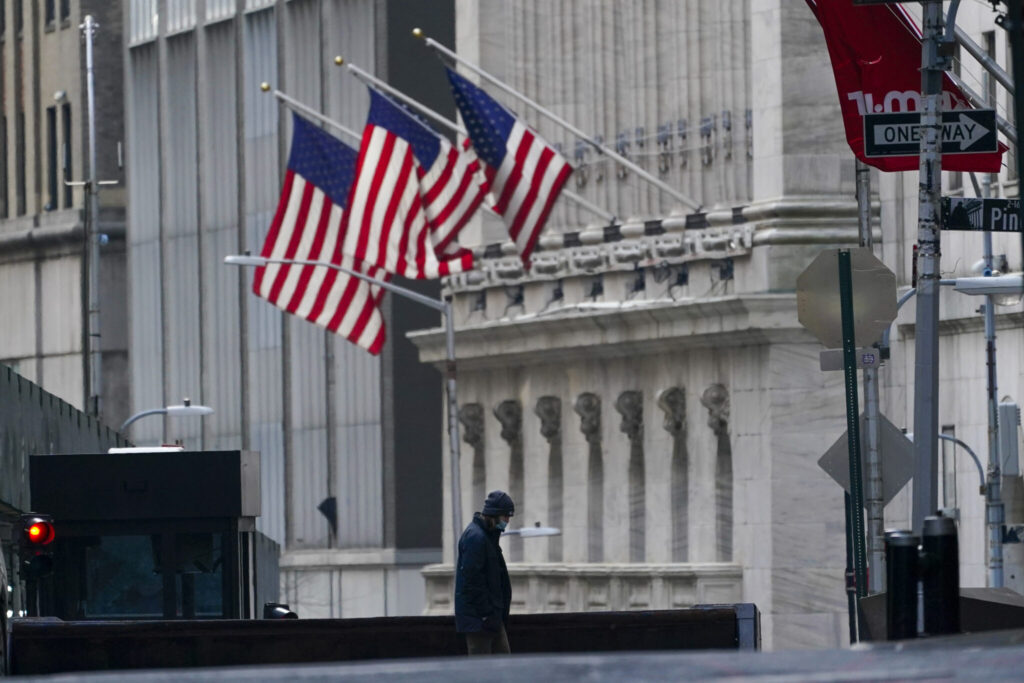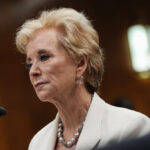Futures for the Dow Jones Industrial Average fell 0.6% and the S&P 500 slipped 0.7%. A raft of U.S. data and European inflation numbers will give guidance on how the world’s top central banks will navigate the way ahead – including whether we’re heading for that hotly debated “no landing” scenario. The Associated Press has the story:
US futures lower ahead of the inflation data
Newslooks- NEW YORK (AP)
Wall Street veered toward losses early Friday ahead of the release of consumer price data in the U.S. that could play into the Federal Reserve’s next interest rate policy decision.
Futures for the Dow Jones Industrial Average fell 0.6% and the S&P 500 slipped 0.7%.
The government on Friday reports the core U.S. personal consumption expenditure for January, also known as the PCE price index, which measures changes in prices of consumer goods and services, excluding food and energy. PCE is the Fed’s preferred inflation gauge and forecasts are for moderate increases as steep inflation abates in response to easing supply chain issues and higher interest rates.
Last month’s PCE data showed that prices eased further in December, rising 5% last month from a year earlier and down from a 5.5% year-over-year increase in November. It was the third straight drop.
In its bid to beat down four-decade high inflation, the Fed has raised interest rates at its last eight meetings dating back to March of last year. That has pushed the central bank’s key rate to a range of 4.5% to 4.75%, its highest level in 15 years.
High rates hurt prices for investments, particularly those seen as the riskiest, the most expensive or those whose big growth is in the future. They also raise the risk of a recession because they slow the economy.
A lengthening list of reports have shown the U.S. economy is in stronger shape than expected, raising hopes a recession can be avoided. But that’s also forced Wall Street to raise its forecasts for how high the Fed will take interest rates and how long it will keep them there.
Fewer workers applied for unemployment benefits last week than expected, the latest indication the job market remains resilient. A separate report said economic growth was likely a touch weaker in the last three months of 2022 than earlier estimated. But the U.S. economy still grew at a 2.7% annual rate.
Wall Street’s heightened expectations for rates and the Fed have been most evident in the bond market, where Treasury yields have shot higher this month. They eased a bit on Thursday, taking some of the pressure off stocks.
The yield on the 10-year Treasury, which helps set rates for mortgages and other important loans, rose to 3.91% early Friday from 3.89% late Wednesday. Earlier this week, it topped 3.95%, approaching its highest level since November.
The yield on the 2-year Treasury inched up to 4.73% from 4.71% late Thursday.
In Europe, Germany’s DAX fell 0.6% and the CAC 40 in Paris lost 0.4%. Britain’s FTSE 100 gained 0.2 %.
Japan reported its core consumer price index, excluding volatile fresh foods, rose the most in 41 years in January. But the nominee to head its central bank, economist Kazuo Ueda, told lawmakers he favors keeping Japan’s benchmark interest rate near zero to ensure stable growth.
Ueda is expected to succeed BOJ Gov. Haruhiko Kuroda when he steps down in April after two 5-year terms marked by unprecedented easing. The change of leadership has prompted speculation about a possible change in the ultra-lax monetary stance, though Ueda sought to dispel such expectations.
Wages in Japan have failed to keep pace with price increases, and worries over a potential global recession have left the BOJ wary of altering course.
“Time is needed before the effects of monetary policy kick in,” Ueda told Parliament, noting the price rises are peaking.
Tokyo’s Nikkei 225 index added 1.3% to 27,453.48 and the S&P/ASX 200 in Australia gained 0.3% to to 7,307.00.
In Hong Kong, the Hang Seng index lost 1.7% to 20,010.04 while the Shanghai Composite index gave up 0.6% to 3,267.16. South Korea’s Kospi lost 0.6% to 2,423.61.
India’s Sensex fell 0.4% and shares also fell in Taiwan and Bangkok.
In other trading Friday, U.S. benchmark crude oil gained 67 cents to $76.06 per barrel in electronic trading on the New York Mercantile Exchange.
Brent crude, the pricing basis for international trading, picked up 65 cents to $82.60 per barrel.
The U.S. dollar rose to 135.62 Japanese yen from 134.70 yen. The euro fell to $1.0578 from $1.0596.
On Thursday, the S&P 500 rose 0.5% for its first gain in five days, while the Dow industrials advanced 0.3%. The Nasdaq composite surged 0.7%.







